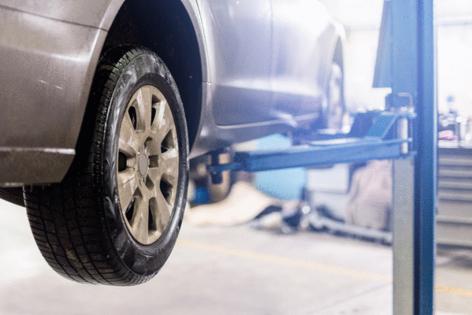Motormouth: Hoses and belts
Published in Automotive News
Q: I own a 2011 Tacoma with 76,000 miles on the odometer. I had all of the maintenance done "by-the-book" at 50,000 miles. Hoses and belts seem to last much longer than they used to when I began driving in the 1960s. So as a preventive maintenance procedure, what is your rule of thumb for changing hoses and belts for maximum reliability ?
G.B., Liverpool, New York
A: The materials to make hoses and belts have come a very long way since the Ford Mustang and Batmobile debuted — and a band from a different Liverpool made the scene. I have no rule of thumb, but if you can squeeze the hose between your fingers and thumb, it is probably time to replace it. Ask your favorite auto tech to give your vehicle the once-over from time to time.
Q: My son has had my 2011 Ram for a few years now and it has 163,410 miles on it. He claims that at 35 mph, the truck shudders. He downshifts to third gear, and it clears up. The check engine light says the catalytic converter and 02 sensors are bad. Would this cause the truck to shudder?
B.B, Elizabeth City , North Carolina
A: You mentioned the catalytic converter, but there’s another converter that’s the likely source of the trouble: the torque converter. It connects the drivetrain to the engine with a lock-up clutch inside creating a true 1:1 connection. If it fails to unlock at lower speeds, it shudders. By downshifting he is forcing the lock-up to release. Changing the transmission fluid may solve the problem, but you might ultimately have to replace the torque converter. The catalytic converter has no connection to this issue.
Q: I have a 2022 Subaru Forester and every time I go through a car wash or every time it rains, hours after or even days after, when I roll down the window, I put it back up and it is still wet. I have brought it to the dealer and mentioned this to them and they say that this is just something that happens. I am concerned that inside the doors this is going to rot and/or rust. Have you ever heard of this, and do you know of a fix for this?
J.G., Springfield, Illinois
A: Water sitting inside the doors is, indeed, an invitation to rust. That’s why carmakers put weep holes in the bottoms. I have heard reports that the weatherstrip sometimes obscures the holes and may need trimming. Use a small brush or pipe cleaner to also clean the holes.
Q: We just purchased a 2022 Mercedes-Benz GLC 300 SUV. In receiving the post-purchase talk with the service manager, he indicated the need to run premium gas (91 octane) in the vehicle. I told him many gas stations carry premium (93 octane) or plus (89 octane). I asked him if it is OK to run a combination of the two to save some money, but not effect performance. He said no. Is there any issue with alternating both premium and plus to average a 91 octane ?
J.Z., Allentown, Pennsylvania
A: The carmaker’s requirement is to use gasoline with a minimum 91 octane. Anything above that is fine. But if you wish, can create your own blend if you don’t mind the hassle.
©2024 Tribune Content Agency, LLC.







Comments